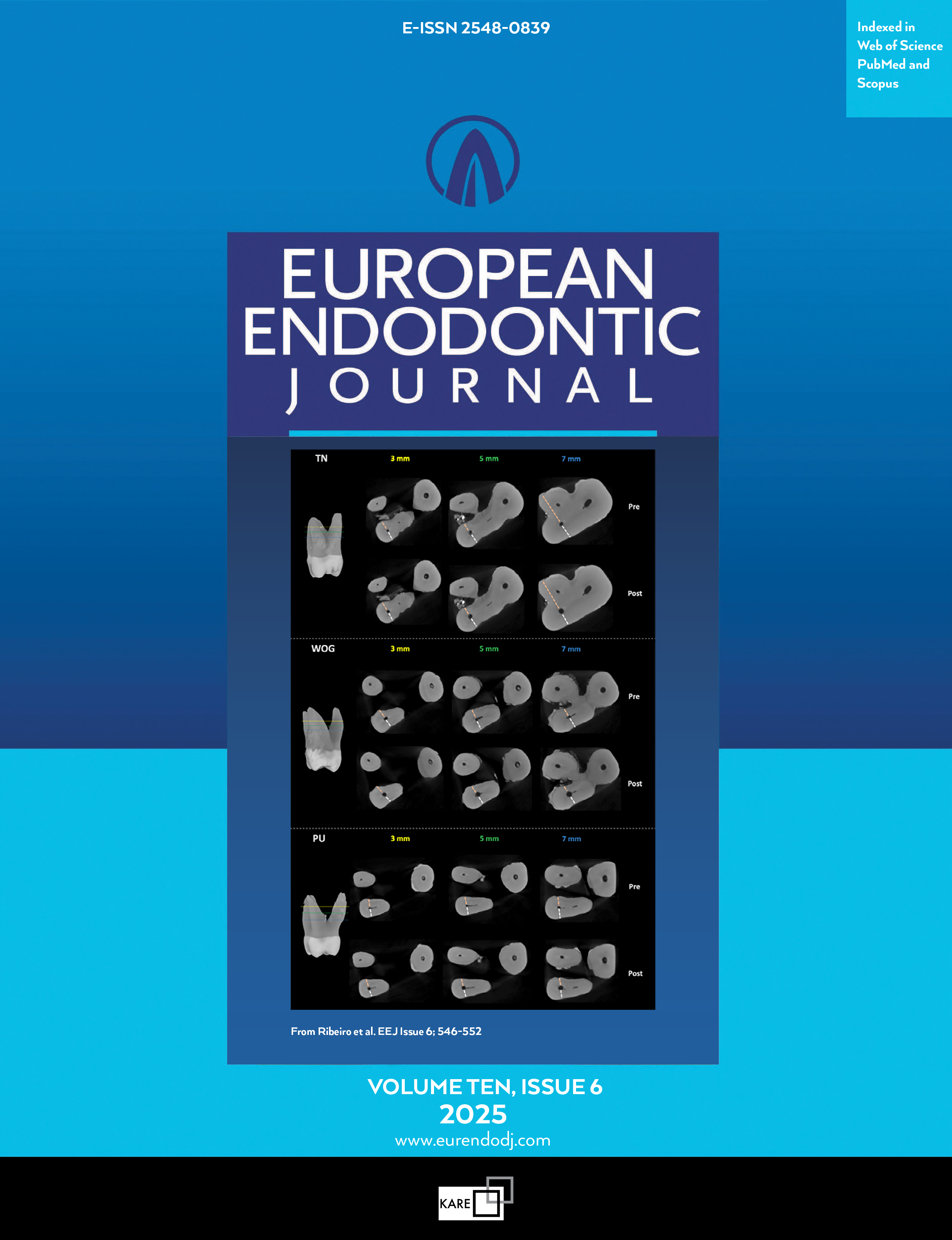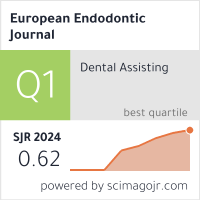Metrics
2024 IMPACT FACTOR
5 year Impact Factor
Eigenfactor Score
2024 CiteScore
Journal Citation Reports
(Clarivate 2025, JIF Rank)
Effect of Pre-Endodontic Sealing on the Microleakage of Temporary Restorative Materials After Endodontic Treatment: An In Vitro Study
Rosana Carlosama Rodriguez1, Maria Soledad Peñaherrera Manosalvas1, Camilo Pulido2, Cristian Sanchez11Postgraduate Dentistry, Hemisphere University, Faculty of Health Sciences, Quito, Ecuador2Department of Oral Rehabilitation, San Francisco de Quito University USFQ, Faculty of Dentistry, Quito, Ecuador
Objective: This study aimed to investigate the effectiveness of various commercial temporary restorative materials in preventing microleakage with a pre-endodontic sealing technique (PES).
Methods: Ninety-six human single-rooted premolars were prepared for endodontic access and randomly allocated to five groups according to the material to restore the cavity (n=16): CON: Control group, Tetric N-bulk, Ivoclar; COL: Coltosol, Coltene; KET: Ketac Molar, 3M; FUJ: Gold Label Fuji II, GC; CLI: Clip F; and two experimental conditions (n=8): COT: conventional technique and, PES technique. Methylene blue dye penetration was measured in mm. Two-way ANOVA and Bonferroni post-hoc were used (p<0.05)
Results: For most materials, PES exhibited statistically significantly lower values of dye penetration (p < 0.001), except for KET and COL. The highest dye penetration was found in FUJ using the COT technique.
Conclusion: The PES technique was more effective in preventing microleakage when polymer-based materials were used. (EEJ-2025-02-027)
Keywords: Endodontics, microleakage, pre-endodontic, temporary restorations
Manuscript Language: English
(533 downloaded)



